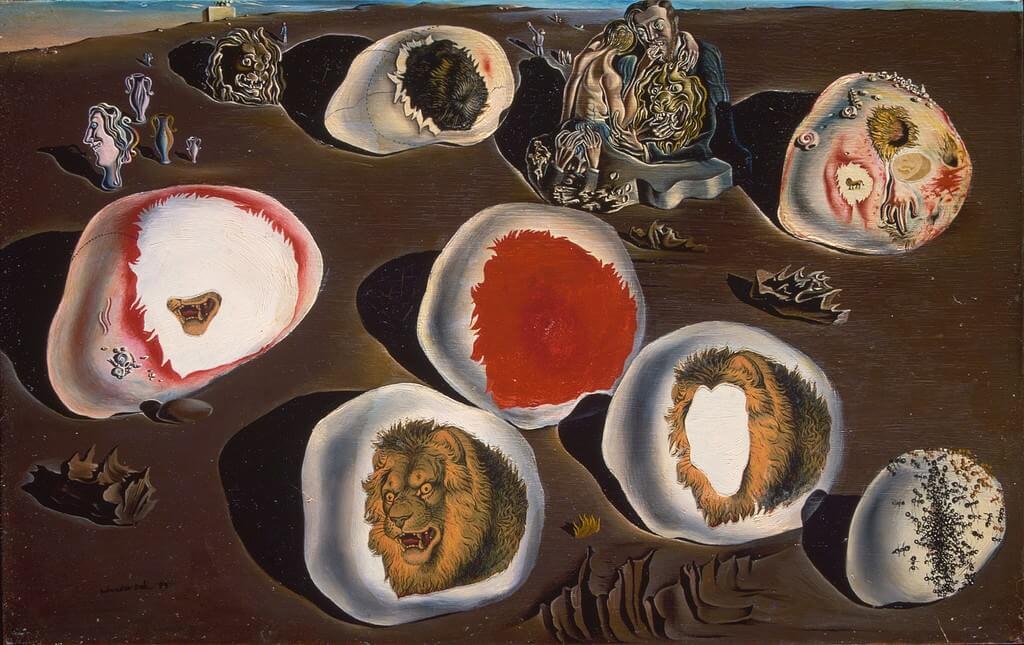The Accommodations of Desire, 1929 by Salvador Dali

Salvador Dali was officially allied with Surrealism from 1929 to 1941, and even after that his work continued to reflect the influence of Surrealist thought and methodology. His flamboyance, flair for drama and self-promotion, and hyperactive imagination reinvigorated the group and its public popularity. Dali, who was given to hallucinations and paranoiac visions, cultivated these outrageous subjects for his paintings, rendering them so meticulously that they were unsettling in their clinical matter-of-factness. Such pictures exemplified the Surrealist preoccupation with dreams and the unconscious.
Painted in the summer of 1929, The Accommodations of Desire is a small gem that deals with the twenty-five-year-old Dali's sexual anxieties over a love affair with an older, married woman. The woman, Gala, then the wife of Surrealist poet Paul Eluard, became Dali's lifelong muse and mate. In this picture, which Dali painted after taking a walk alone with Gala, he included seven enlarged pebbles on which he envisioned what lay ahead for him: "terrorizing" lions' heads (not so "accommodating" to his "desire" as the title of the painting facetiously suggests), as well as a toupee, various vessels (one in the shape of a woman's head), three figures embracing on a platform, and a colony of ants (a symbol of decay). Dali did not paint the lions' heads but, rather, cut them out from what must have been an illustrated children's book, slyly matching the latter's detailed style with his own. These collaged elements are virtually indistinguishable from the super-saturated color and painstaking realism of the rest of the composition, startling the viewer into questioning the existence of the phenomena recorded and of the representation as a whole.























